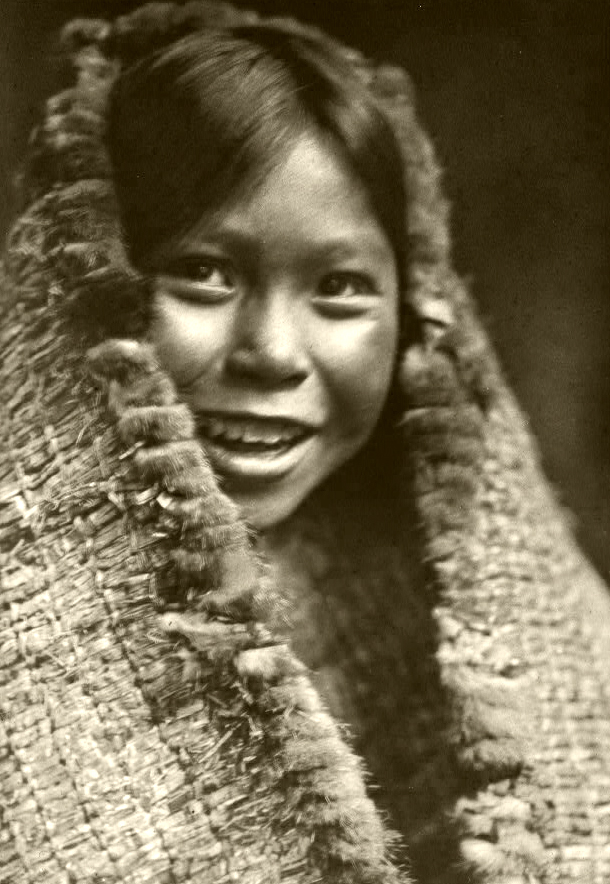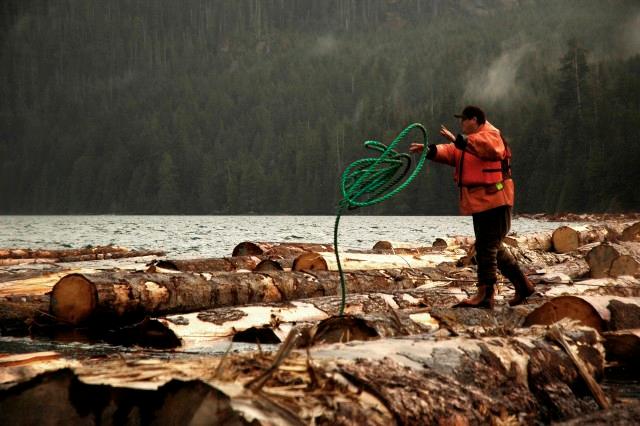The Hupacasath (Hupač̓asatḥ, formerly Opetchesaht) are a Nuu-chah-nulth First Nation residing in the Alberni Valley, Vancouver Island, BC. According to the nation, Hupacasath means “people residing above the water.” In October 2021, the federal government reported that there were 353 registered members of the Hupacasath Nation.
Territory and Population
The traditional territories of the Hupacasath included Alberni Inlet, the Somass River, Sproat Lake and Great Central Lake in British Columbia. Their territories also comprise mountainous areas, including Hannah Mountain, Mount Arrowsmith, Mount Spencer, 5040 Peak, Mount Chief Frank and Big Interior Mountain.
Today, the Hupacasath live mainly at Ahahswinis reserve, near Port Alberni. Controlling about 232 hectares of reserved land, the total registered population of this Nuu-chah-nulth nation is 353, more than half of which (201) live off reserve.
Traditional Life
The Hupacasath lived in small bands made up of a few families. They hunted and travelled together according to the seasons and to the migratory patterns of certain animals. Elk and deer were particularly important for subsistence, although the Hupacasath also relied on salmon and foraging for berries and vegetation to supplement their diet.
Society
The Hupacasath historically consisted of three main bands of Salish-speaking peoples: the Muh-uulth-ant, the Kleh-koot-aht and the Cuu-ma-as-aht. The Muh-uulth-ant, meaning “people from the place where there is a mountain with the face burnt off,” lived in areas around Great Central Lake. The Kleh-Koot-aht lived in present-day Port Alberni and in areas around Sproat Lake. According to the Hupacasath, the Kleh-Koot-aht’s neighbours along Sproat Lake were the Cuu-ma-as-aht, whose main village, near modern-day Port Alberni, remains their current settlement.They and the Kleh-koot-aht also lived around Ahahswinis, which means “cleared in the middle.”
After a period of warfare with the Tseshaht, the bands all formed peaceful bonds with one another through intermarriage and a new division of territory, by which the Tseshaht laid claim to most of the Somass River. However, warfare and contact with the Tseshaht, as well as disease, significantly reduced the Hupacasath population, leading to the Hupacasath’s adoption of Nuu-chah-nulth culture. The Muh-uulth-ant, Kleh-koot-aht and Cuu-ma-as-aht amalgamated as one community, under the leadership of Kanaawis – a head warrior chief.
Culture
Historically, the Nuu-chah-nulth have had a strong ceremonial culture, characterised by feasting and entertainment with song, dance, contests and theatricals. (See also Potlatch.) The Nuu-chah-nulth have also been known for their stunning woodwork, including canoes, totem poles, multifamily houses and other products hand-crafted out of fine cedar. (See also Northwest Coast Indigenous Art.) One well-known Hupacasath artist is Ron Hamilton, who apprenticed with renowned Kwakwaka’wakw carver Henry Hunt and works in a variety of mediums, including ivory, gold, wood and slate.
Klehkoot Lake is a spiritually significant place for the Hupacasath. Carvings etched into the rocks along the north shore of the lake (sometimes referred to as K’ak’awin) are now preserved by the Province of British Columbia. Shamans held rituals on the lake to help people with healing (specifically fertility) and with their daily practices, such as hunting. (See also Indigenous People: Religion and Spirituality.)

Language
The Hupacasath speak their own dialect of Nuu-chah-nulth (Nuučaan̓uɫ), referred to simply as Hupacasath (Hupačasatḥ). The language is extremely endangered. As of 2015, there were only five people who somewhat understood or spoke the language, and about eight learning speakers. Colonial policies – most significantly, residential schools – eroded and in some cases, abolished, Indigenous languages. The Hupacasath nation has created a language program that seeks to preserve and revive their language. (See also Nuu-chah-nulth: Language and Northwest Coast Language Families.)
Religion and Spirituality
The Nuu-chah-nulth belief system centres on a Creator being as well as spirits whose powers can be used to bring peace and fortune. The Nuu-chah-nulth believe that all life forms have a spirit, and should therefore be respected and appreciated. Shamans ensured the spiritual health of the people by practising ancient medicines and healing rituals to cure illness and restore balance to the soul.
Colonial History
Forced onto reserves by the late 19th century, the Hupacasath were made to assimilate to white, Christian culture through federal programs and policies such as the Indian Act and residential schools. Hupacasath culture has survived in spite of these dark moments in Canadian history.
Rights and Legal Battles
On 9 September 2012, Canada announced that it had signed an agreement with China to improve investment relationships between both countries (officially called the Agreement between the Government of Canada and the Government of the People’s Republic of China for the Promotion and Reciprocal Protection of Investments). The agreement stipulated that a violation of its terms may result in proceedings before an arbitral tribunal and possibly a monetary award. The Hupacasath nation argued that they had a right to be consulted prior to the signing of the agreement, stating:
…the Agreement changes the landscape in the sense that it creates incentives for Canada to act in a manner that avoids breaches of the Agreement and resulting monetary awards. This, it says, may cause Canada to act in a manner that injures the appellant and its interests.
On 9 January 2015, the Federal Court of Appeal decided in the case of Hupacasath First Nation v. Canada (Foreign Affairs and International Trade Canada) that Canada did not have a duty to consult the Hupacasath. However, the Hupacasath and other Indigenous nations continue to fight for their rights to traditional territory and self-determination.
Contemporary Life

The Hupacasath are involved in various development industries, including forestry, fishing and electrical power. In July 2012, the Hupacasath signed an agreement with the Province of British Columbia that increased its access to timber, and therefore allowed for the development of new economic and employment opportunities. In cooperation with the federal Department of Fisheries and Oceans Canada, the Hupacasath have also developed a commercial fishing business. In December 2005, Upnit Power Corporation, which operates on Hupacasath territory, started producing enough electricity for 6,000 homes. In addition to some other economic endeavours, the Hupacasath also have a maple syrup business called Kleekhot Gold. The syrup is locally produced from the maple trees in Kleekhoot.
The Hupacasath are also one of the 14 nations represented by the Nuu-chah-nulth Tribal Council, an association founded in 1958 that provides various services to approximately 9,500 registered members, including child welfare, education, employment training and other socio-economic programs that support health and development.

 Share on Facebook
Share on Facebook Share on X
Share on X Share by Email
Share by Email Share on Google Classroom
Share on Google Classroom






